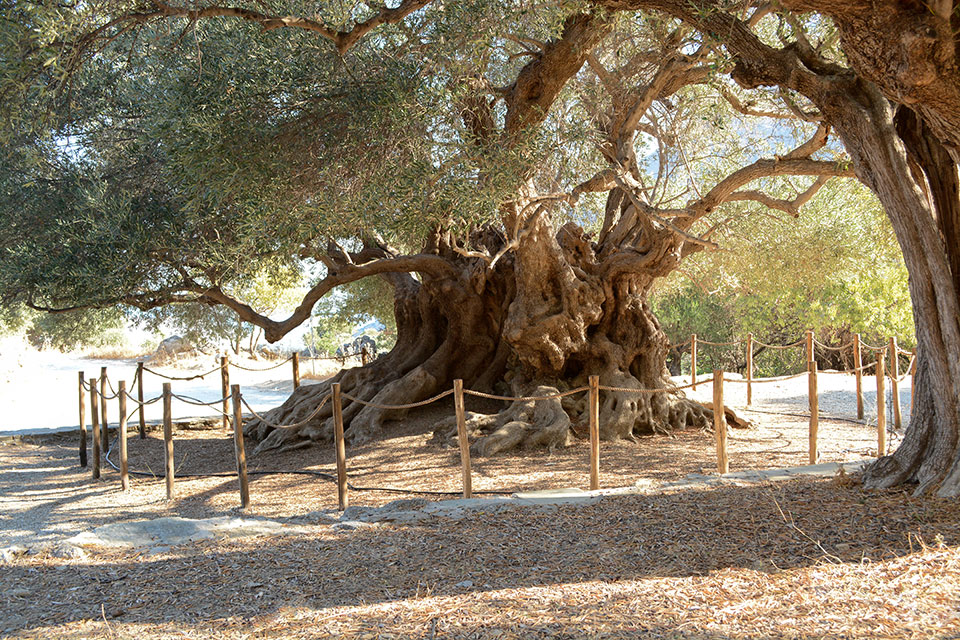In the heart of Kavousi, Crete, amidst the rugged beauty of the Mediterranean landscape, stands a living monument to the passage of time: the oldest olive tree. With roots that delve deep into the fertile soil of this ancient land, this majestic tree bears witness to centuries of history and tradition.
Thought to be over 3,000 years old, the ancient olive tree of Kavousi embodies the resilience and vitality of the Cretan landscape. Its weathered bark tells tales of civilizations risen and fallen, of wars waged and peace restored. For millennia, it has stood as a silent sentinel, watching over the land and its people with unwavering stoicism.
Located one kilometer south of Kavousi village and in close proximity to the archaeological site sharing its name, Azores Olive proudly stands as a natural monument and the world’s oldest olive tree. Uniquely, it is grafted onto a wild subject, showcasing the most ancient grafting example globally.
Recognized by the Olive Municipalities Association of Crete as a memorial, this ancient olive tree holds historical significance due to its imposing dimensions and its proximity to the ancient settlements of Vronta, Castro, and Azore. The surrounding areas have yielded numerous artifacts, including pottery and pressing systems. Acquired by Georgios Grammatikakis in 2008, the tree belongs to the mastoid variety locally known as “mouratoelia.”

With a trunk boasting a maximum diameter of 4.9 meters and a perimeter of 14.20 meters, the Azores Olive is a colossal testament to the passage of time. Using annual ring analysis, experts estimate that the tree was planted during the period between 1350 and 1100 B.C.
In a poignant gesture, in 2004, following the suggestion of local residents and the municipality of Ierapetra, it was decided that the first winner of the Women’s Marathon in the Olympic Games in Athens would be crowned with branches from the Azores Olive, adding a touch of ancient symbolism to modern athletic achievements.
For the people of Kavousi, the ancient olive tree is more than just a symbol of longevity; it is a living link to their past, a tangible connection to the land that has sustained them for millennia. Its sprawling canopy provides shade from the scorching sun, its fruits yielding precious oil that nourishes both body and soul.
As visitors stand in awe before the ancient olive tree of Kavousi, they are reminded of the enduring power of nature and the profound legacy of the olive tree in Cretan culture. In its gnarled branches and twisted roots, they find echoes of the past and glimpses of a future rooted in harmony with the land.
Photography & Information from: https://www.ierapetra.gr/index.php/en/history-culture/minoan-ancient-roman-period/269-mnimiaki-elia-azoria-2
